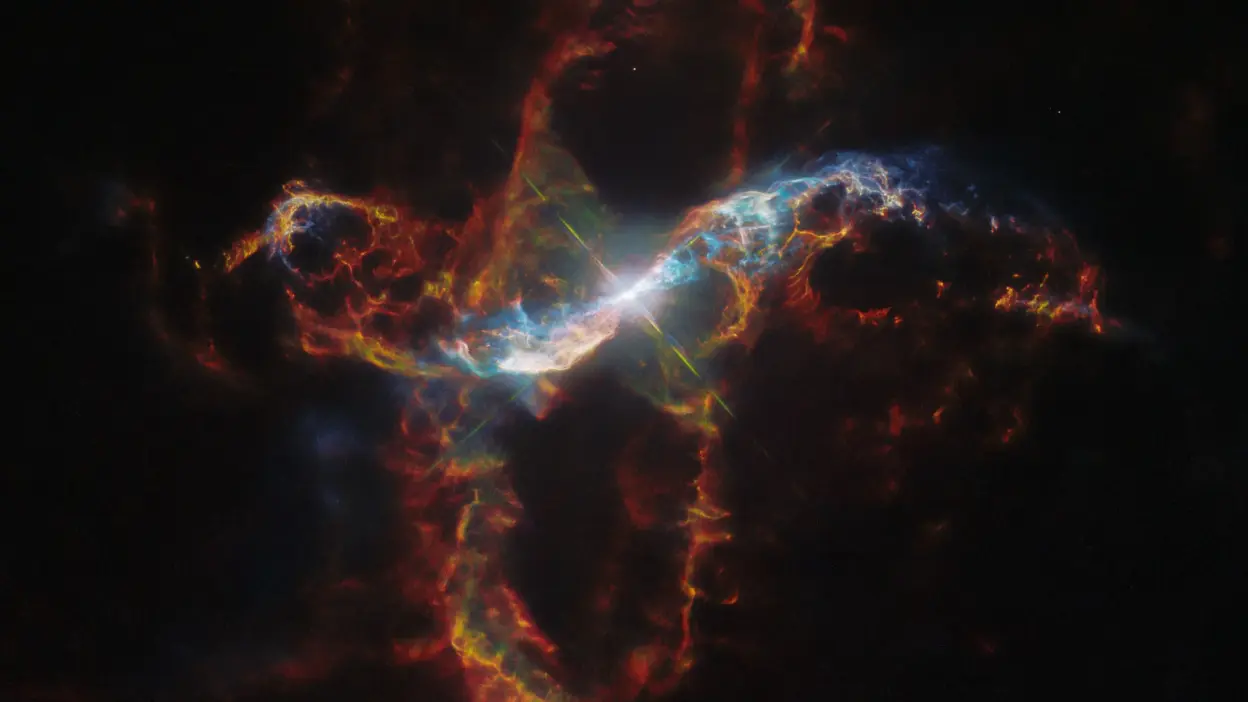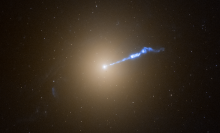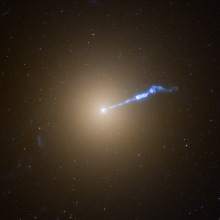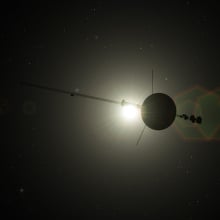New images from NASA's Hubble Space Telescope demonstrate how a withered star remnant is only mostly dead — that is until a bloated nearby star reanimates it, a la Frankenstein.
The legendary observatory has monitored a double star system about 700 light-years away from Earth for more than 30 years, capturing how it dims and brightens over time as a result of strong pulses from the primary star. The binary, composed of a white dwarf star and a red giant star, has a caustic relationship, releasing tangled streams of glowing gas into the cosmos like an erratic lawn sprinkler.
Astronomers have dubbed this toxic pair in the constellation Aquarius a "stellar volcano" for how it sprays streams of glowing gas some 248 billion miles in space. For comparison, that's 24 times farther than the diameter of our solar system.
NASA is watching the stars to study how they recycle elements into the universe through nuclear energy.
"The plasma is shooting into space over 1 million miles per hour – fast enough to travel from Earth to the Moon in 15 minutes!" NASA said in a statement. "The filaments are glowing in visible light because they are energized by blistering radiation from the stellar duo."
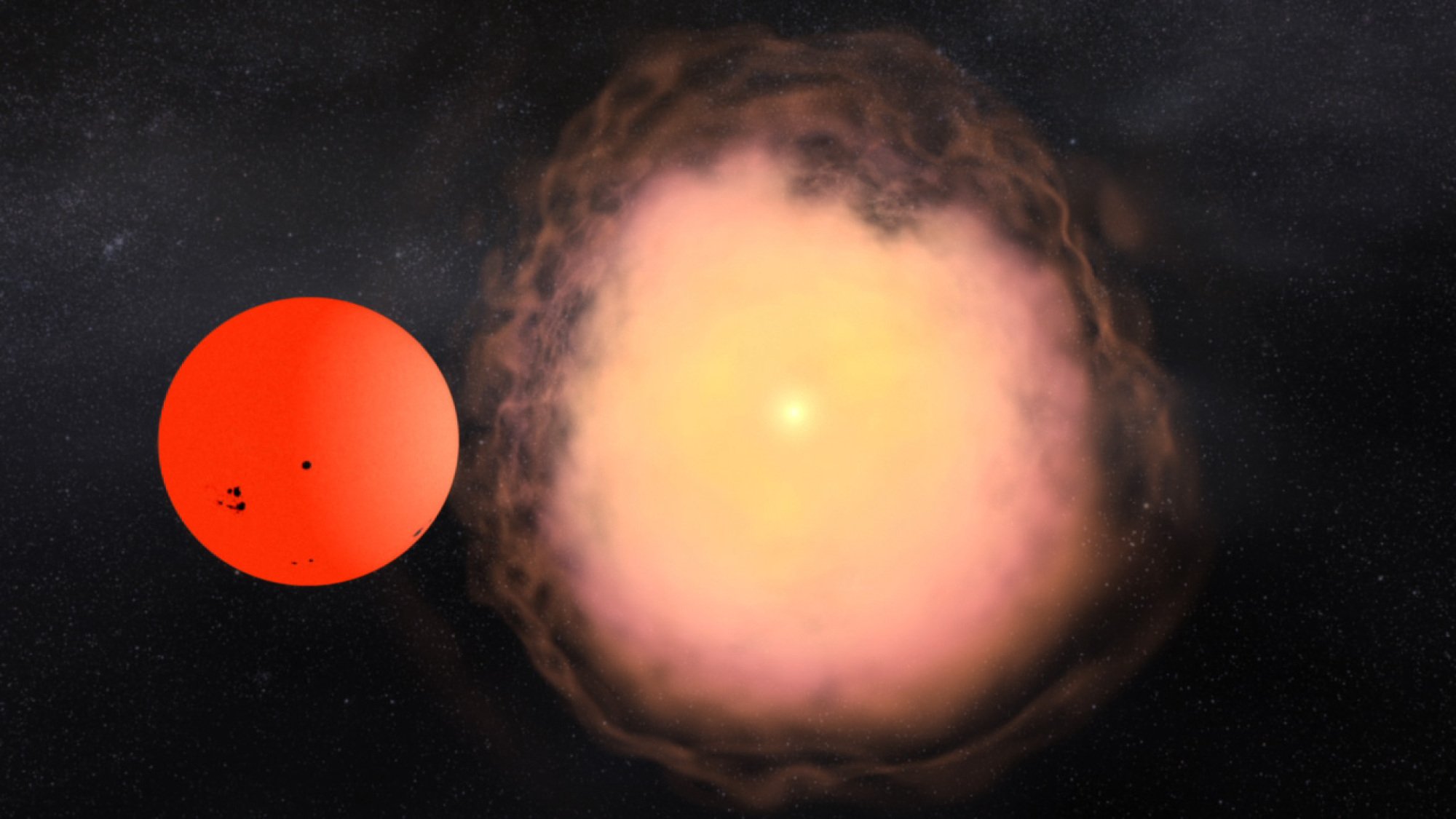
The binary star system, known collectively as R Aquarii, is a special type of double star, called symbiotic, and it's the closest such pair to Earth. In this system, an elderly red giant, bloated and dying, and a white dwarf, the shriveled core of a dead medium-sized star, are orbiting each other.
The big star is over 400 times larger than the sun and varies dramatically in brightness over a 400-day period. At its peak, the red giant is 5,000 times brighter than the sun. Like the big star in R Aquarii, the sun is expected to bloat into a red giant in about 5 billion years.
When the white dwarf in R Aquarii gets close to its hulking companion along its 44-year orbit, the dead star steals stellar material away with gravity, causing hydrogen gas to heap onto its cool surface. That process makes the corpse rise from the dead, so to speak, warming up and eventually igniting like a bomb.
NASA and the European Space Agency created the above timelapse video of R Aquarii using Hubble images that spanned 2014 to 2023.
This thermonuclear explosion is called a "nova" — not to be confused with a supernova, the obliteration of an enormous star before it collapses into a black hole or neutron star. The nova doesn't destroy the white dwarf — rather, the explosion merely causes it to spew more elements, like carbon, nitrogen, oxygen, and iron, back into space.
This year scientists have been on the edge of their seats, waiting for a nova to emerge from T Coronae Borealis, or T CrB, a binary star system about 3,000 light-years away in the Milky Way. This particular nova, which should be visible to the naked eye, is intriguing because it experiences periodic outbursts. Experts have determined it detonates about every 80 years.
A few months ago, experts believed the white dwarf would go nova sometime before September. Curiously, that sudden brightening hasn't happened yet.
Tweet may have been deleted
"Recurrent novae are unpredictable and contrarian," said Koji Mukai, a NASA astrophysicist, in a June statement. "When you think there can’t possibly be a reason they follow a certain set pattern, they do — and as soon as you start to rely on them repeating the same pattern, they deviate from it completely."
These events are critical to understand because of how important they are for generating and distributing the ingredients for new stars, planets, and life. And this is what astronomer Carl Sagan meant when he said humans are made of "star stuff." The same substances that make our bodies were literally forged within the cores of stars, then flung through the cosmos when the stars burst.
R Aquarii blasts glowing jets that twist up and out following strong magnetic fields. The plasma seems to loop back onto itself, weaving an enormous spiral.
Topics NASA
